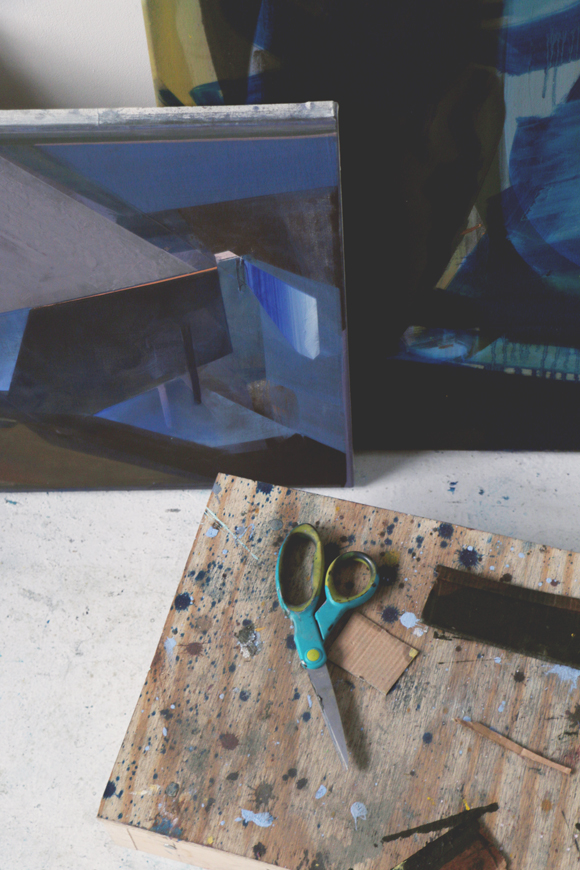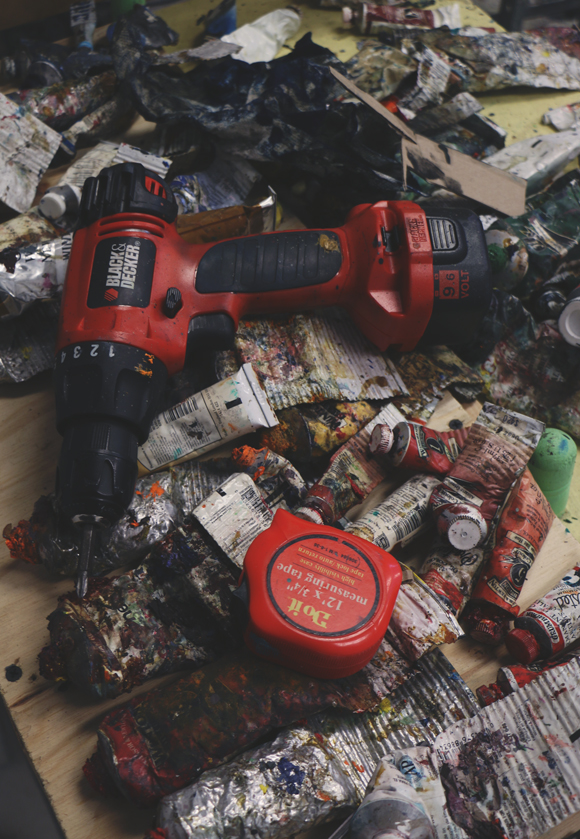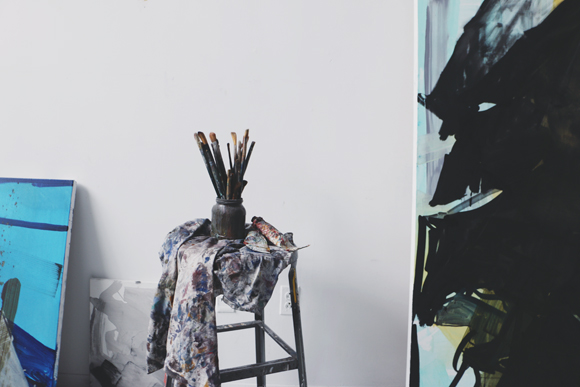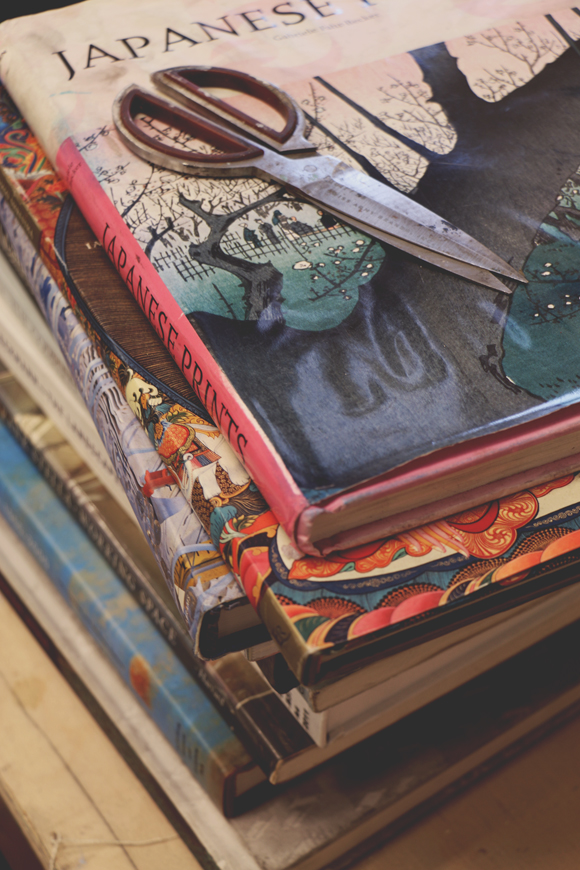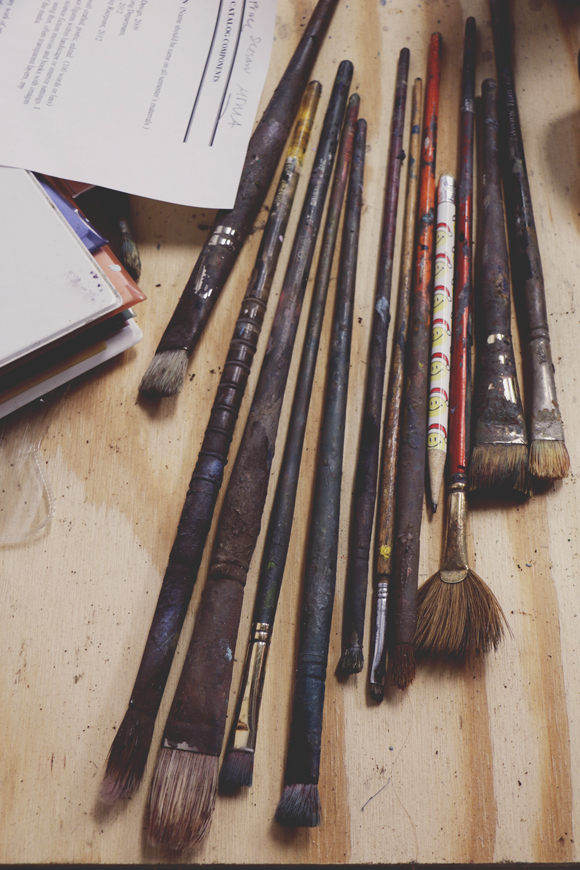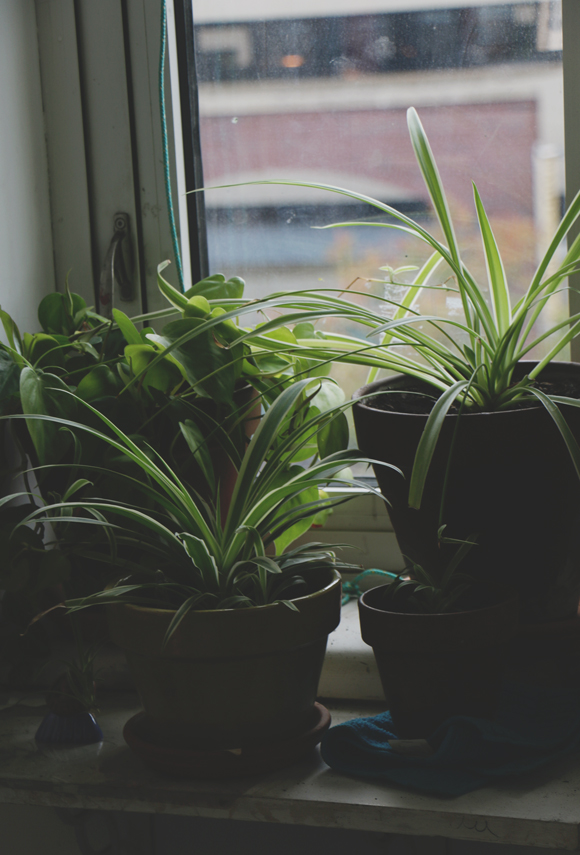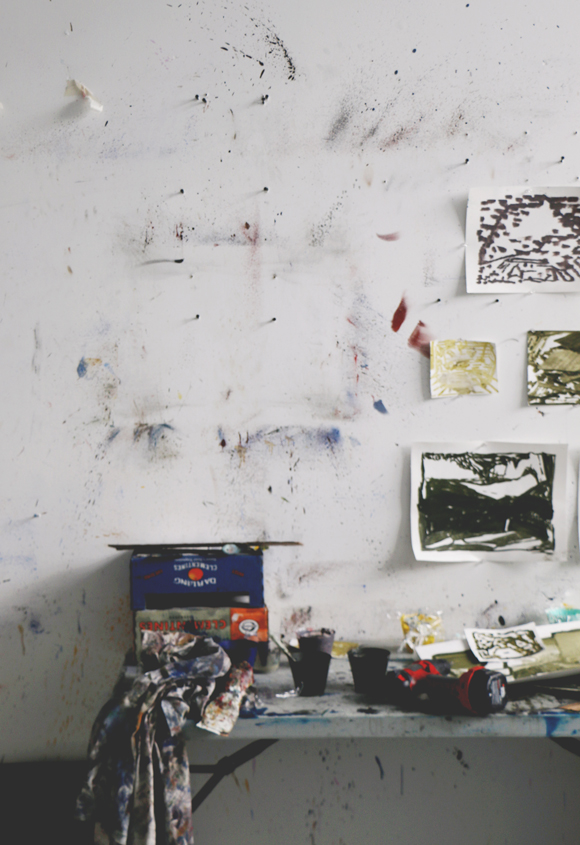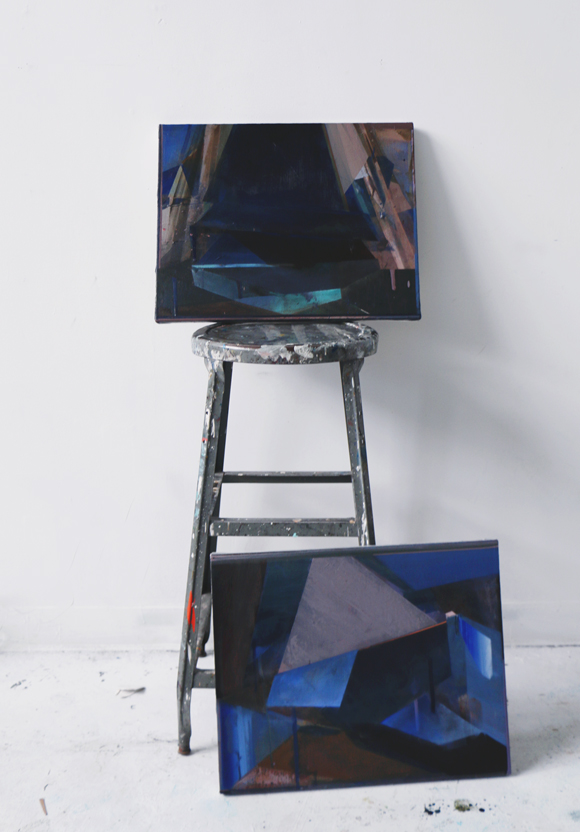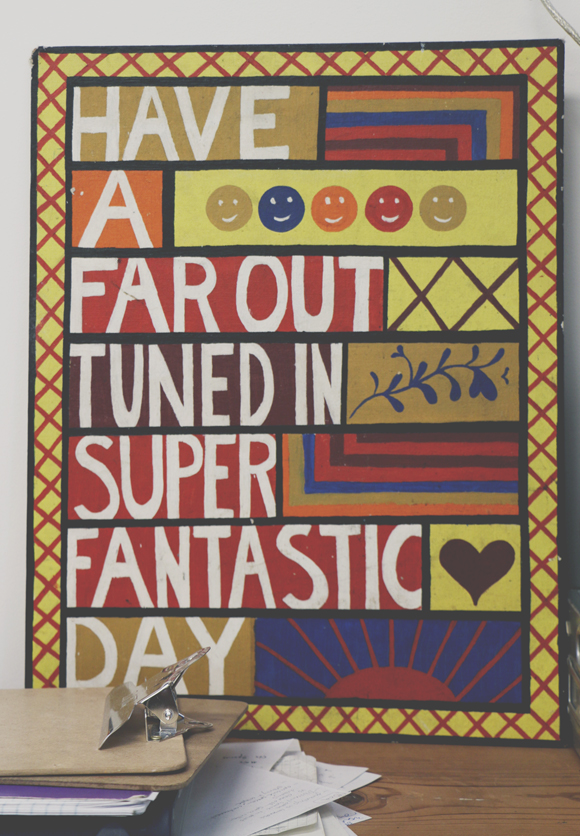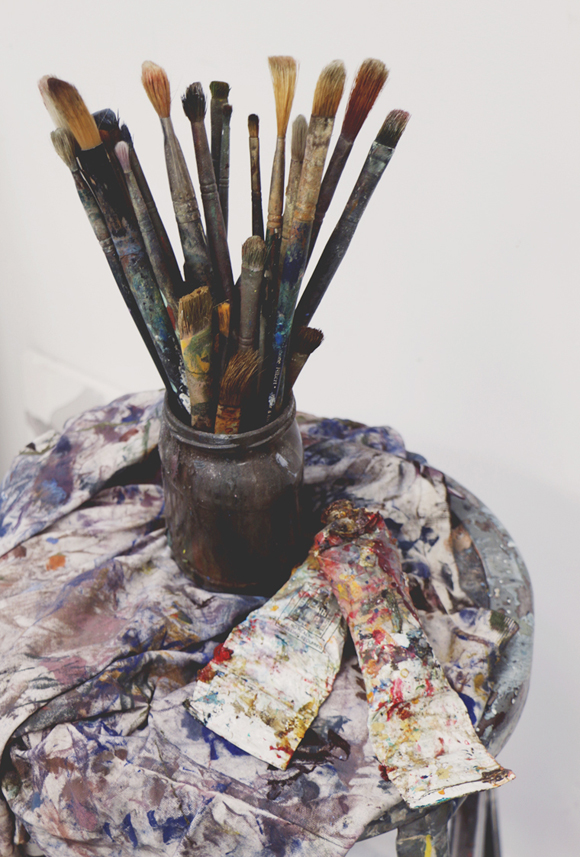Artist Profile: Bea Modisett
Richmond. A city that has certainly left an impression on me, and a city that I anticipate returning to. Not exactly top of mind when one imagines the great artistic hubs of the world, but that’s just another reason to love it.
Not boastful in it’s beauty, the artistic side of Richmond has a way of popping up unexpectedly. Turn a corner and you might find yourself face to face with one of the boldest murals you’ve ever seen, or glance skyward for a glimpse of a street artist’s wheat-paste masterpiece adorning the side of an old building. It’s only then that you might realize, this city is brimming with artistic flourish. Tucked away in one of those buildings is the painting studio of recent Richmond transplant Bea Modisett.
I’ve known Bea for a long time, first as a classmate at the small fine arts college we attended, and later, as a close friend and collaborator. She is easily one of the most driven and accomplished artists that I know, and a seasoned veteran of the road. Speak to her for ten minutes, and I can guarantee you’ll leave the conversation day dreaming of cross-country road trips and sojourns to Africa, India, and Thailand. The spaces and landscapes depicted in her varied body of work invite exploration, often eliciting vastly different reactions from those who view it. While in Richmond for our recent FP Me event, I had the opportunity to tour Modisett’s studio and talk about her travels, her art, and the challenges that come with being a full-time artist:
Well, I was born in Washington, DC, bounced back and forth between DC and Rhode Island as a child, finally settling in Rhode Island for high school. I attended a small fine arts college in Beverly, MA — Montserrat College of Art — which I graduated from in 2007. This past summer I relocated to Richmond, VA to attend Virginia Commonwealth University, where I’m working towards my Master’s.
Did you always want to be an artist?
I remember, in the 3rd grade we made a yearbook, they took our picture and in this box they instructed us to draw what we wanted to be when we grew up; kids were drawing themselves as astronauts and doctors, I drew myself in a beret with a paintbrush.
I imagined myself similarly as a kid — the artist in the beret with the easel and palette — how has your perception of what an artist is changed in recent years?
I’m learning that artists have a huge responsibility and potentially a lot of power. It’s not just about me expressing myself – obviously it is, in a way — but I’m also realizing that as an artist you have a responsibility to try to make people understand that there are different ways of seeing and experiencing the world. My work isn’t political but you can see the power of artists who do political work. I’m recognizing that art can really shift perspectives. So I think it’s gone from my younger self being like, “I’m expressing myself and being an individual!” to feeling as if this is a legitimate tool that can do some good in the world.
Travel is a big part of your life and your work, do you think your time spent moving back and forth between DC and Rhode Island as a child inspired your later wanderlust?
Moving, sure, but it was also my parents. Our family vacations were unconventional — never Disneyland — we were always visiting historic battlefields or camping; my parents taught us that it’s important to move and to always be looking. So travel, to me, is me looking for something, searching for something, not necessarily home, but just searching, looking, exploring. I think it’s important to be exposed to everything this world has to offer. That can mean physical exploration, but also exploration within your own mind. Don’t just accept what surrounds you.
Can you pinpoint a moment when your desire to travel went beyond those family vacations? A breakthrough moment when you realized that travel was going to become a huge part of your work?
I went to Italy and Africa with Montserrat, which was incredible. Looking back on those experiences… they were pivotal but also felt a little surface. When I returned home, the patterns and the energy of the people I met all made their way into my painting. I painted the patterns of the dresses I saw women wearing, the patterns of the fabric. It wasn’t until I drove solo across the country — from Boston to San Francisco on a month-long journey — that’s when I felt a really incredible connection to traveling alone, to being in those landscapes, it was intense. I remember being like “Julie, I just want to get in my car and drive to California,” do you remember that? And then I did it! I planned my trip and I went.
So, the trips to Italy and Africa were both taken with fairly large groups, did you realize after that that it would be most beneficial to you as an artist to travel alone?
Yes, and I think in that way it relates back to painting. Painting is such a solitary endeavor. When I’m traveling alone I know I’ll go somewhere I wouldn’t if I were with a companion. Being alone, you can really dive into your brain and the emotions or thoughts that you would normally be distracted from feeling. You don’t really dig as deep as you could when you’re with people. When I saw Delicate Arch for the first time, I sat for an hour uninterrupted. That probably couldn’t have happened if I had someone with me.
You spoke about being very literal at first in translating these experiences to your work, what has changed in your approach?
The approach has changed. When you’re traveling your brain is firing on all cylinders, you have to figure out what you’re going to eat, where you’re going to sleep. My trip to Asia – I didn’t know how to communicate with people, I didn’t know what I could and couldn’t eat, I didn’t know who I could trust. Your whole brain is awake. After all that, returning to Beverly felt so safe, and honestly a little quiet. The biggest lesson for me was to find the excitement that I felt abroad in the painting. I see painting as traveling, I’m finding worlds, but I’m making them myself. I found a connection to the landscape that I’m able to explore in my work, so now it’s more about translating that feeling of travel, and this feeling of being somewhere new and navigating that, and having respect for the intensity of these places.
Do you remember having a lightbulb moment, a moment where it all came together for you?
Yeah, I was driving into Colorado, and I saw the mountains and cliff faces that were nothing like the ones I grew up with in New England. And seeing Red Rock for the first time, it was another world, it was like Mars. When I entered that space, I felt a very tangible shift, my heart skipped a beat. You know when you see your favorite painting, and it just takes your breath away?
Yeah…
It was like that. You’re taken aback. That’s something that I felt, and I questioned why I felt it, which translated into my work. So looking back, I can say that that was the moment, but I didn’t necessarily know it at the time.
Knowing how often you moved and how much you crave travel and new experiences, it’s interesting that up until recently you were so firmly anchored in Beverly, MA. Can you tell me about the decision to stay there?
The four years at Montserrat, I look at it as four years of building a community and after graduation I stayed with that community. I continued to cultivate relationships, which lead to opportunities. By staying in Beverly I was able to teach at the college, run a gallery, I was working for artists and showing my work.The community kept offering me support, and I was able to actively live as an artist because I had ties there. I knew it was time to go, though, when the painting wasn’t keeping me from feeling under-stimulated. Beverly is amazing — you know that — but I wanted to be surrounded by people who were devoting their lives to it. I needed that intensity around me.
So how has the experience of relocating from Massachusetts to Virginia differed from the others, and how is it affecting your work?
It’s different because I know this is my home now, and I love it because there’s always something new. It’s impacted my work because I’ve uprooted everything, I uprooted my life, and I realized I can do that with my work, too. I came here and realized that I can’t make the paintings I was making in Beverly, that doesn’t make sense. Those paintings don’t belong here. It’s new start. I had a very narrow idea of what a good painting was, and this experience has allowed me to broaden the way I view my work.
Have you always worked in the abstract? What brought you to the place you are now?
I’ve always worked pretty abstractly. The only time I was literal about it was high school and within some college courses. What I’m trying to paint is intangible, it’s a feeling, it’s something you can’t see. It’s hard to even say in words, let alone paint in the literal sense. I learn a lot about people when they come to my studio and tell me what they see. I love self introspection, but I also love being able to observe other people. When people tell me things about themselves, I like that, abstraction is like a window into that.
What is the most challenging aspect of being a working artist?
Constantly questioning yourself and self doubt. To want something so badly, and not know if you’ll ever achieve it is hard. The broad lifestyle of an artist is hard, you’re constantly searching for something, and there’s no single answer. There’s no one question and there’s no one answer to what you’re looking for.
What do you hope to ultimately convey to people when they’re viewing your work?
I’m still working on figuring it out, but I want to make paintings that make me and other people feel the way that I felt when I saw Colorado. When I saw something I had never seen before and there’s a shift that occurs. I want to make paintings that shift how people feel, even for a moment.
Do you have any advice for aspiring painters?
I was taught that the only way you’re going to be really good at something, is if you do what you really want to do. Find a way to do it, don’t make excuses, and say yes to opportunities. And realize that you may have to make some sacrifices along the way.
Where are you off to next?
I’m going to Prague and Budapest this spring.But I’m planning most of my travel to take place in the studio. I’m out of my comfort zone in every way possible, it’s a less tangible kind of travel, but it’s the idea of breaking it all open that gets me excited.
Follow FPJulie in Twitter!

